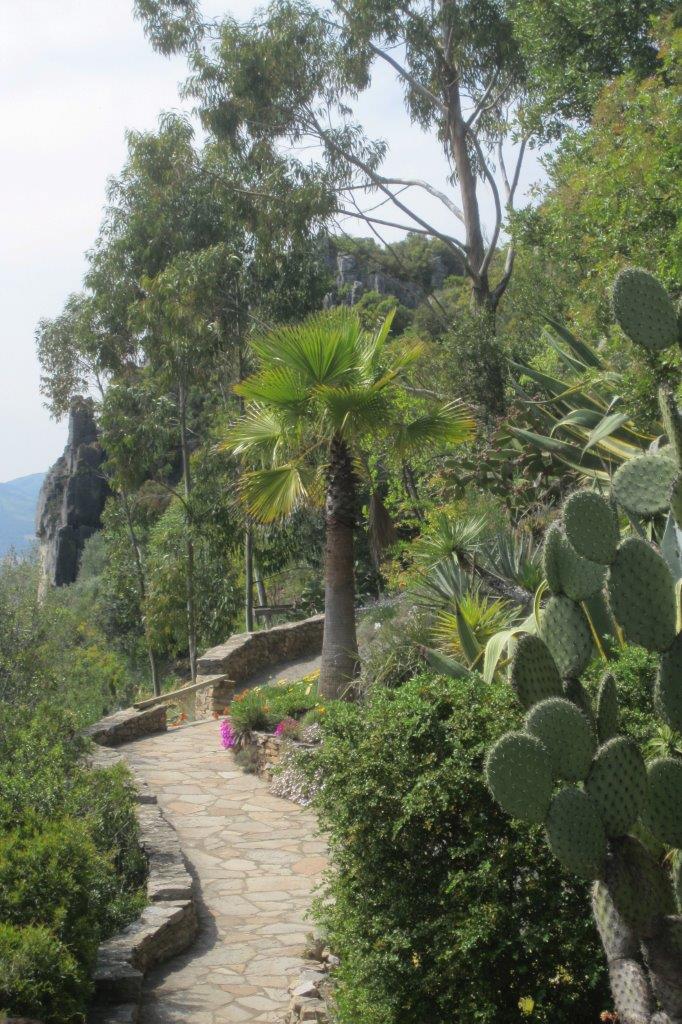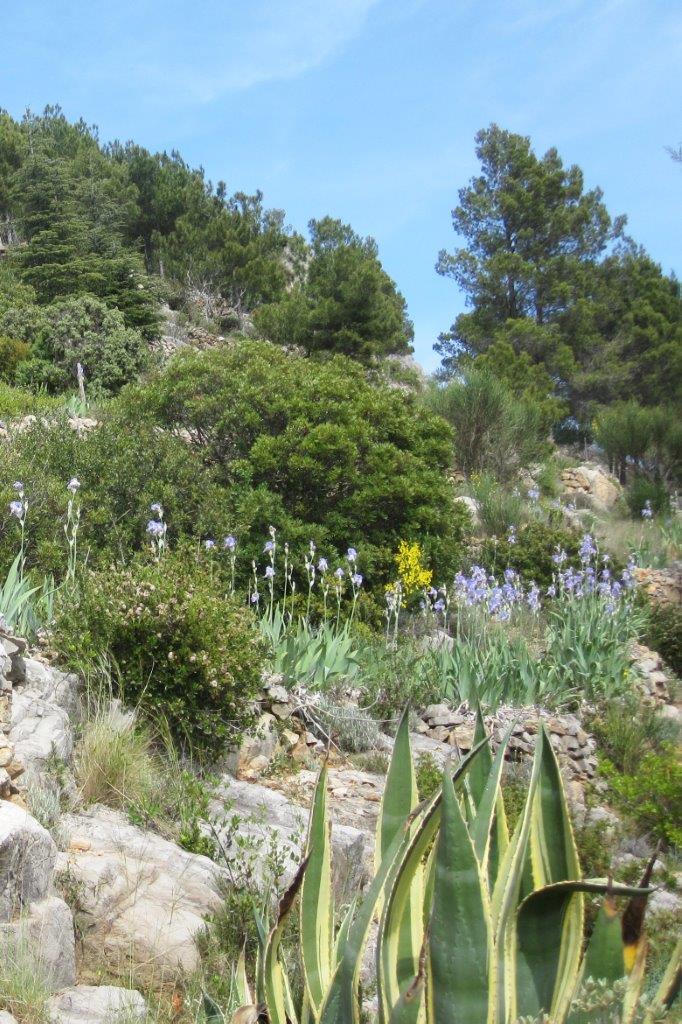April /avril 2011 – Le Jardin Méditerranéen de Roquebrun
Click on the images to enlarge them / Cliquez sur les images pour les agrandir
Le Jardin Méditerranéen de Roquebrun is a garden run by an association, CADE (Collectif Agricole pour le Développement et l’Environnement) which has as a number of objectives including the preservation of endangered species and research into aromatic and medicinal plants. The association took on the site in1988 after it had been abandoned for over a hundred years. Dominated by a Carolingian tower, the garden is on a south-facing cliff overlooking the river Orb. It is protected from the Tramontane wind by dolomitic hills and benefits from a micro-climate which enables many exotic plants to grow.
Our guide, Christophe Pialot, gave us an introductory talk filled with the history of the garden and the village, snippets about culinary uses of the plants (his grandmother put the leaves of Aphyllanthes monspeliensis into salads), quirky pieces of information (orange tree leaves are lobed and lemon tree leaves are scalloped) and descriptions of some of the plants. Plants grow from every crevice and cranny and are encouraged to grow as naturally as possible. The walls and paths are the result of 1600 tons of material being carried up by man and donkey. No chemicals have been used in the garden for the last ten years.
The garden is on three levels, the lowest being the hottest and having the most exotic plants.
Palms, cacti, succulents and lots of citrus trees flourish and the scent was a delight as we climbed up through the garden.
There is a collection of mimosa, with an unusual blue-grey leafed one, Acacia balynea ‘Purpurea’. On the highest level there are plants of the region, juniper, rhamnus and lentisk.
I liked the way the Pistacia lentiscus had been cut to form dense masses, in some places spilling over the rocks.
Christophe said he thought the most interesting of the 4000 plants in the garden is the the Leuzea conifera (syn. Centaura conifera) a short, grey-leaved plant with a creamy yellow flower.
Once common in the garrigue it has been over picked for its decorative cone-like seed head and is now rare. Many of the plants here came from cuttings donated by prestigious institutions, such as the botanical garden at Monaco.
Text: Katharine Fedden
Photos: Christine Daniels
![]()








